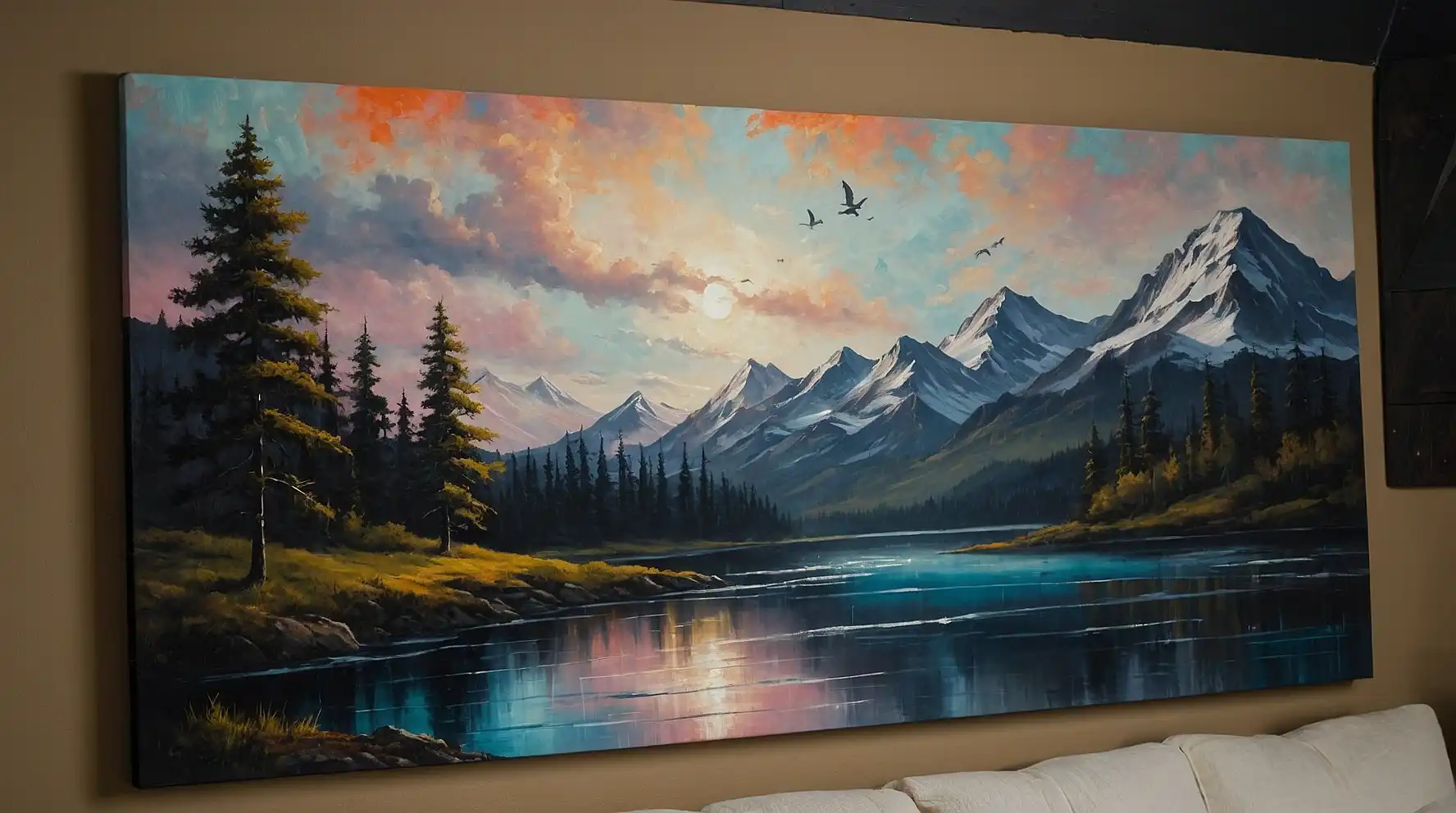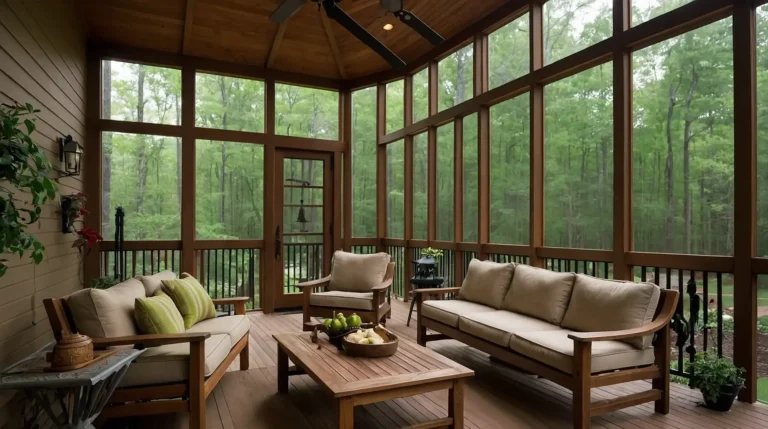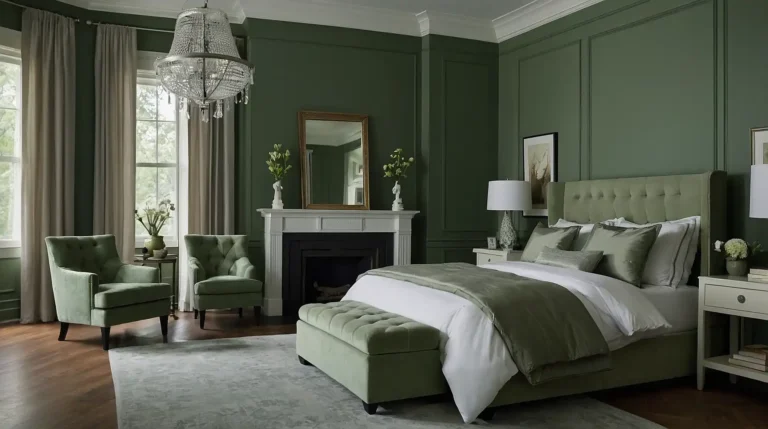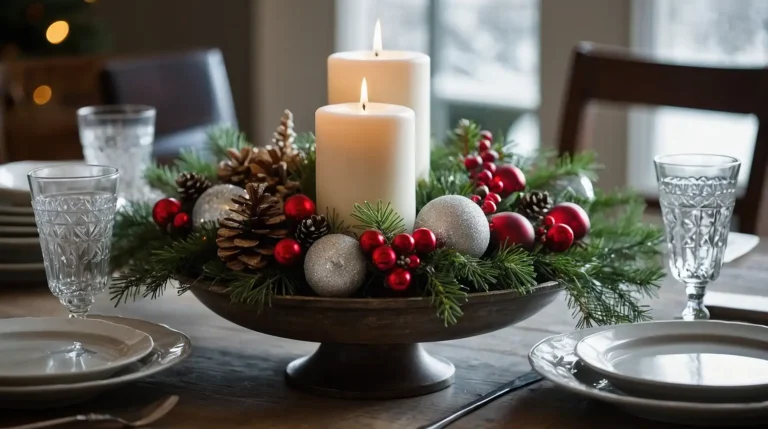21 DIY Canvas Painting Ideas For Beginners
You’re about to discover exciting painting projects that build confidence while creating beautiful artwork.
These beginner-friendly ideas require only basic supplies and simple techniques.
Don’t worry about perfection – embrace the joy of creating. Each project teaches new skills while producing art you’ll proudly display.
These ideas work with acrylic paints and standard brushes. Your artistic journey starts with these approachable, rewarding painting adventures.
1: Simple Mountain Silhouettes
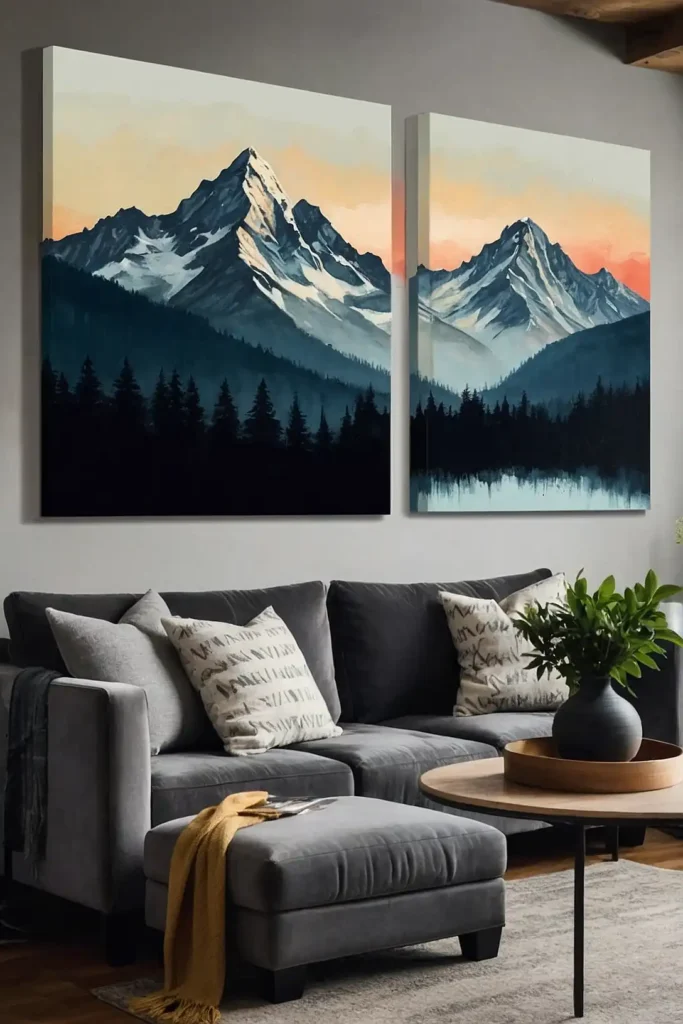
You’ll create stunning landscapes using just two or three colors for layered mountain ranges.
Start with light sky colors and add darker mountains in front.
Paint the background sky first, then add mountain layers from back to front.
Each layer should be slightly darker than the previous one.
This technique teaches color layering while creating depth. Your finished piece will look professional despite using simple methods.
2: Color Gradient Sunset

You can practice blending techniques by painting a smooth sunset gradient from yellow to orange to pink. Work quickly while paint stays wet.
Start with yellow at the bottom and gradually blend upward. Add orange in the middle, then pink at the top for realistic sunset colors.
Blending teaches brush control while creating beautiful backgrounds. Your sunset provides perfect practice for color transitions and brush techniques.
3: Abstract Geometric Shapes
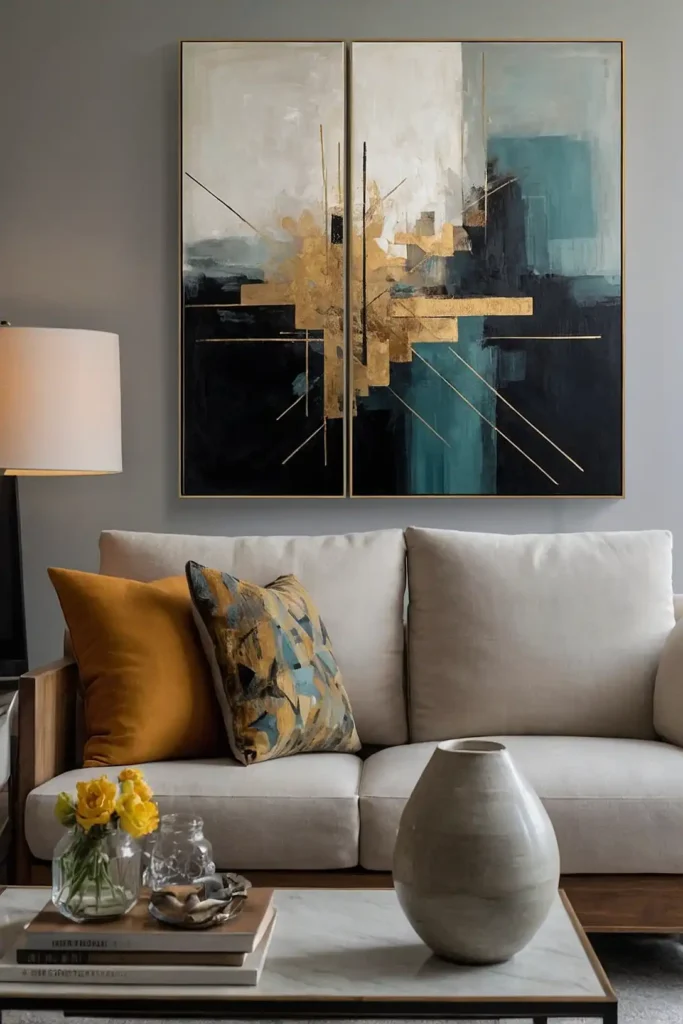
You’ll explore color relationships using painter’s tape to create clean geometric patterns. Choose three to four coordinating colors for best results.
Apply tape to create triangles, squares, or diamonds. Paint each section with different colors, then remove tape while paint is still slightly damp.
Geometric art teaches color theory while guaranteeing success. Your abstract pieces look modern and sophisticated with minimal artistic experience required.
4: Simple Tree Silhouettes
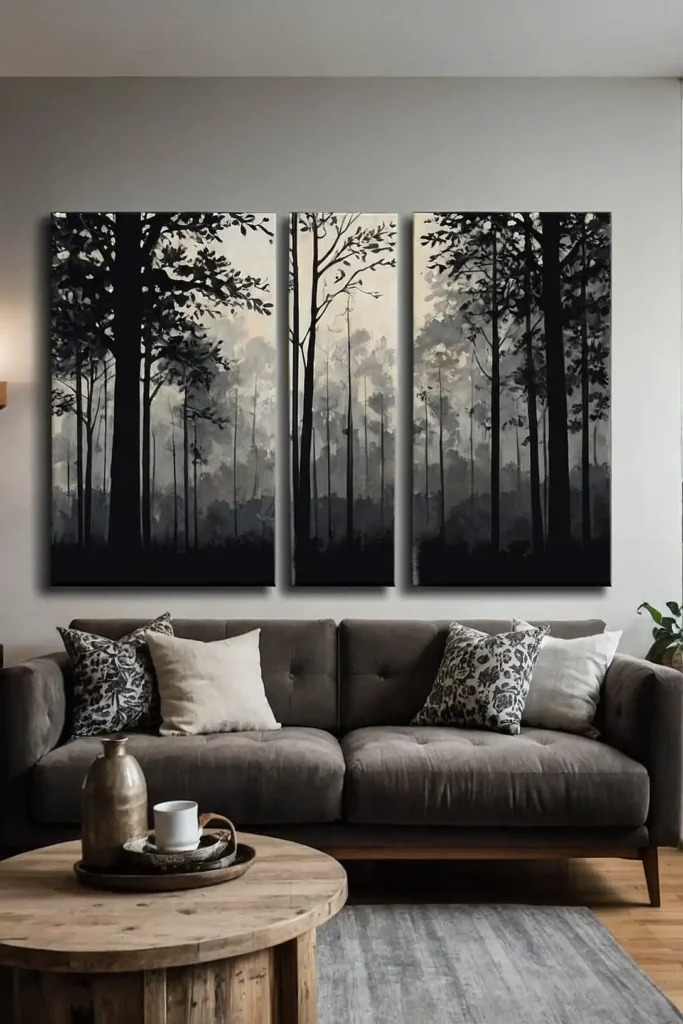
You can paint dramatic tree silhouettes against colorful sunset backgrounds. Paint the sky first, then add black tree shapes over dried paint.
Use a fan brush or palette knife for realistic tree textures. Black silhouettes work against any background color combination you choose.
Tree paintings teach shape recognition and composition basics.
Your nature scenes capture peaceful moods while building fundamental painting skills.
5: Textured Ocean Waves
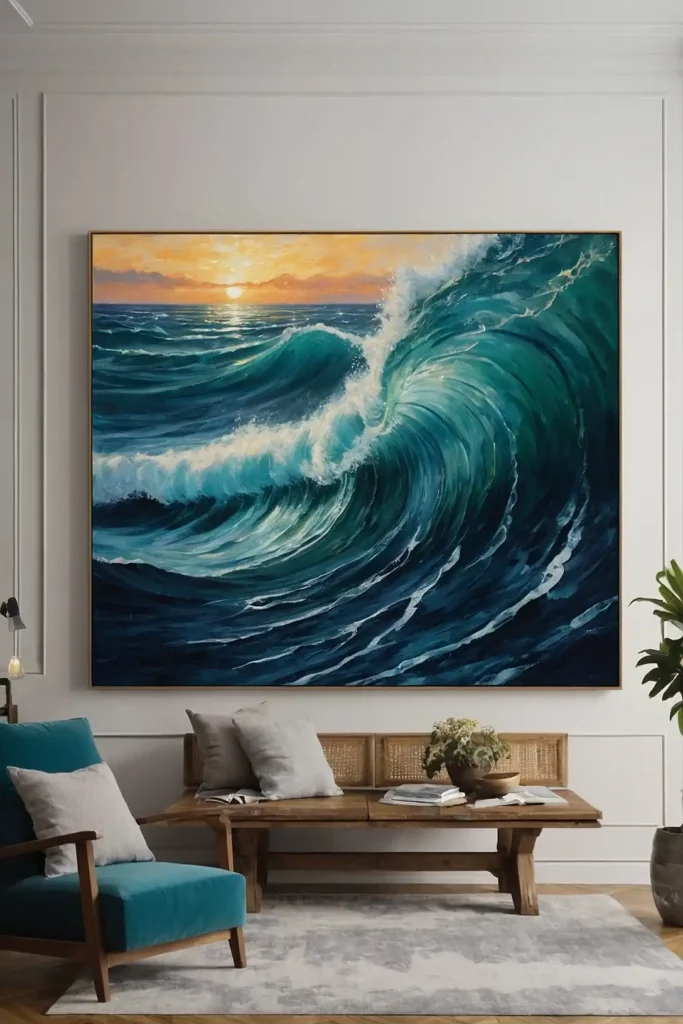
You’ll create movement using horizontal brush strokes in various blue and white tones. Layer colors to suggest rolling waves and ocean depth.
Start with dark blue at the bottom, gradually lightening toward the horizon.
Add white caps with quick horizontal strokes for wave texture.
Ocean paintings teach rhythm and movement through brushwork.
Your seascapes capture the calming energy of water while practicing essential techniques.
6: Flower Field Impressions
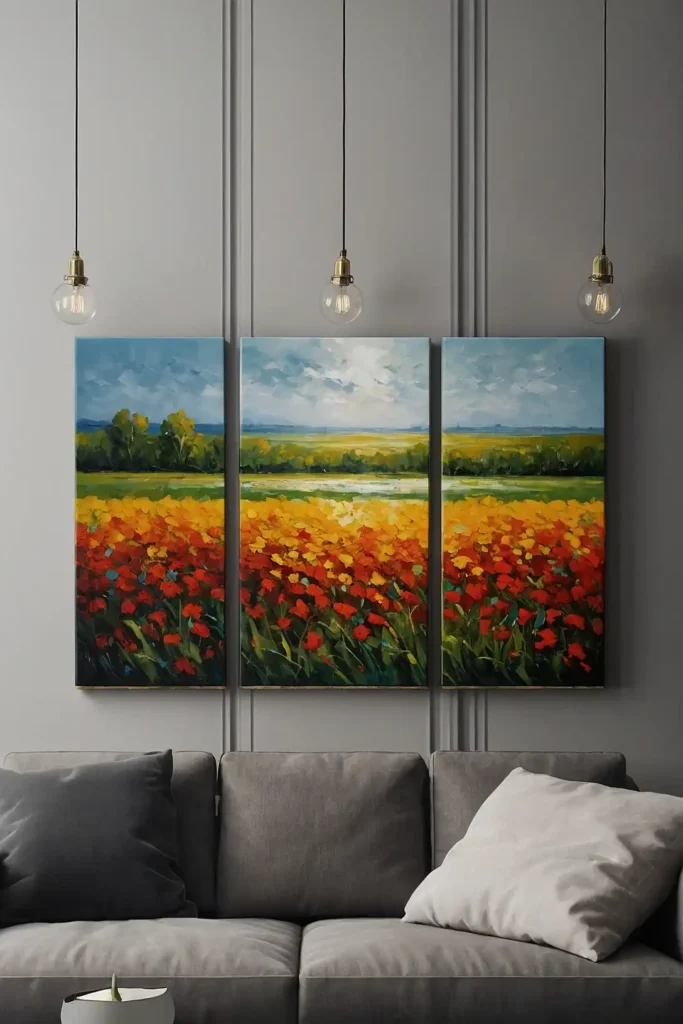
You can paint loose floral impressions using dots and dabs of bright colors over green backgrounds.
Focus on color placement rather than detailed flowers.
Paint a green base, then add flower colors with the brush tip. Use red, yellow, purple, and white for vibrant wildflower field effects.
Impressionistic flowers teach color harmony while building confidence.
Your garden scenes bloom with personality through loose, expressive brushwork techniques.
7: Night Sky with Stars

You’ll create magical nighttime scenes using dark blues and purples with white or yellow stars. Sponge painting creates realistic sky textures.
Paint the entire canvas with dark blue base color. Add purple clouds with a sponge, then splatter white paint for stars.
Night skies teach texture techniques while creating dreamy atmospheres.
Your celestial scenes sparkle with wonder through simple splattering methods.
8: Simple Cactus Garden
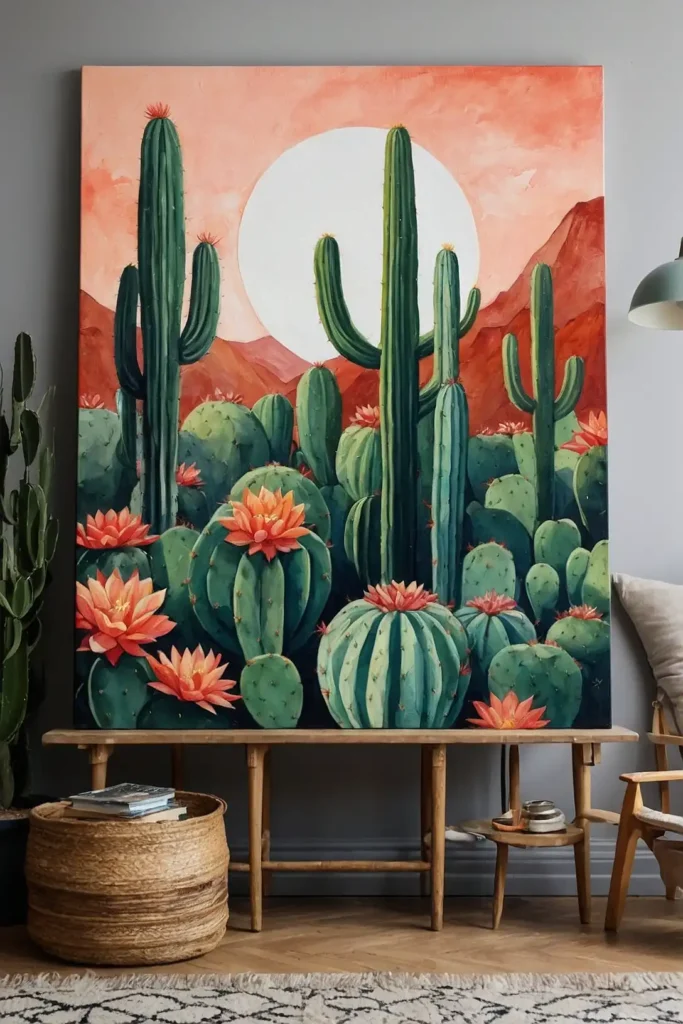
You can paint charming desert scenes using basic green shapes and simple background colors.
Cacti require only simple oval and cylinder shapes.
Paint a warm sunset background first, then add green cactus shapes. Use a small brush to add spines and small flower details.
Cactus paintings teach shape simplification while creating cheerful art.
Your desert scenes bring southwestern charm through easy geometric plant forms.
9: Colorful Hot Air Balloons
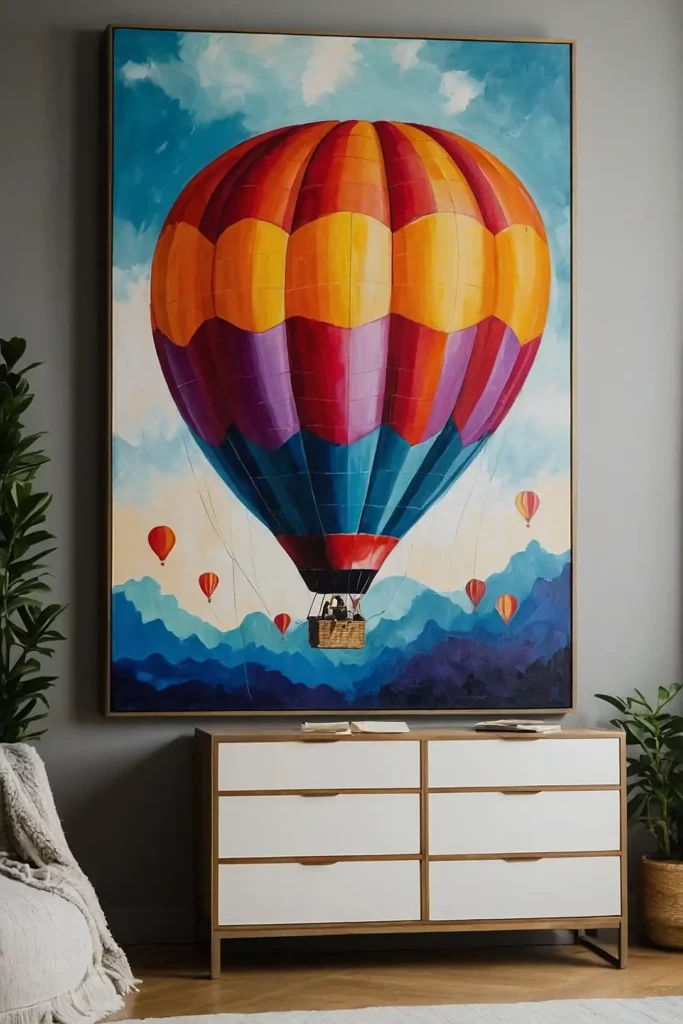
You’ll practice circle shapes and pattern painting with whimsical hot air balloon designs. Choose bright, happy colors for uplifting artwork.
Paint a light sky background, then add balloon circles. Create stripes or geometric patterns on each balloon with different color combinations.
Balloon paintings teach pattern design while maintaining playful attitudes. Your sky scenes float with joy through simple shapes and bright colors.
10: Abstract Color Blocks

You can explore color relationships using rectangular shapes in various sizes and positions. Choose colors that complement or contrast beautifully.
Sketch light rectangle outlines, then fill with solid colors. Overlap some shapes and leave others separate for dynamic composition effects.
Color block art teaches composition basics while encouraging experimentation.
Your abstract pieces explore personal color preferences through geometric arrangements.
11: Simple Lighthouse Scene
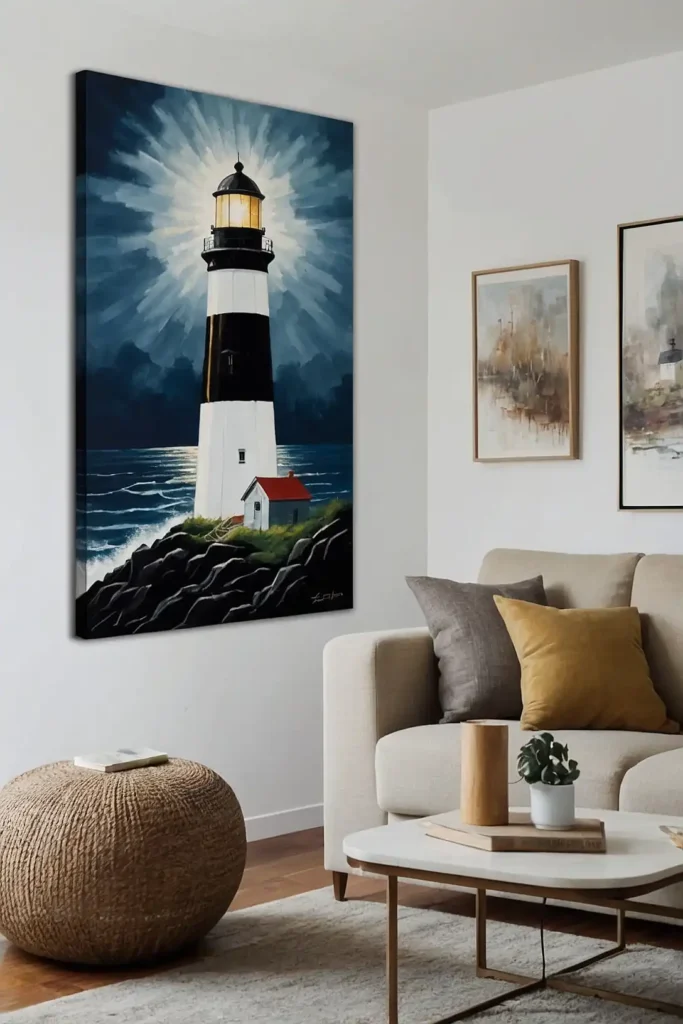
You’ll combine basic shapes to create coastal lighthouse paintings with simple backgrounds.
Use cylinder shapes for lighthouses and triangles for roofs.
Paint a simple sea and sky background first. Add the lighthouse using white and red stripes, then include simple rocks or shoreline details.
Lighthouse paintings teach architectural basics while creating nautical charm.
Your coastal scenes capture seaside tranquility through fundamental shape combinations.
12: Rainy Day Umbrella Scene
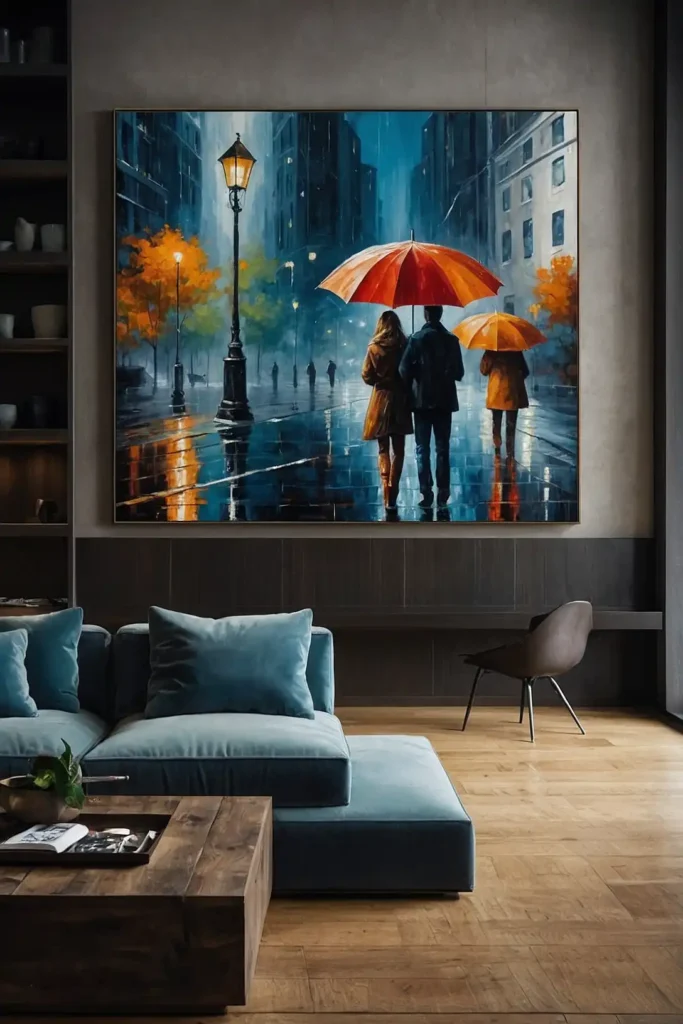
You can paint cheerful umbrella scenes using simple circle shapes and diagonal rain lines.
Choose bright umbrella colors against gray sky backgrounds.
Paint a gray, cloudy sky background first. Add colorful umbrella shapes, then use thin brush strokes for diagonal rain lines.
Umbrella paintings teach weather representation while maintaining optimistic moods.
Your rainy scenes dance with color despite stormy weather themes.
13: Simple Butterfly Silhouettes
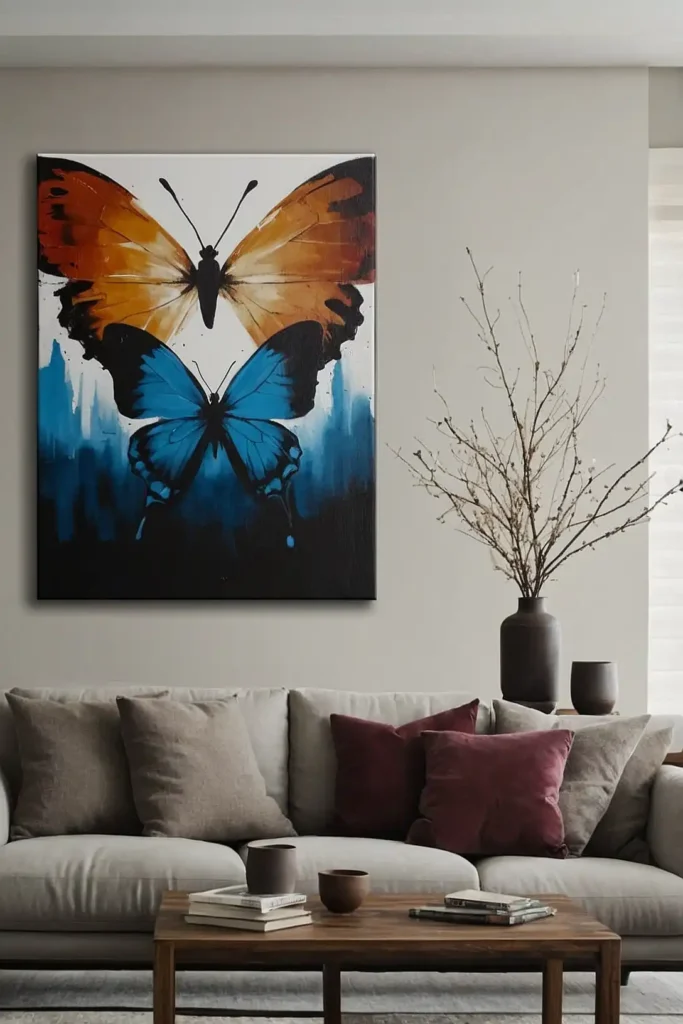
You’ll create delicate butterfly art using symmetrical wing shapes against colorful flower backgrounds. Focus on wing proportions and balance.
Paint a soft floral background with loose brush strokes. Add butterfly silhouettes in black or dark colors over the dried background.
Butterfly paintings teach symmetry and proportion while celebrating nature.
Your garden scenes flutter with life through elegant silhouette techniques.
14: Minimalist City Skyline
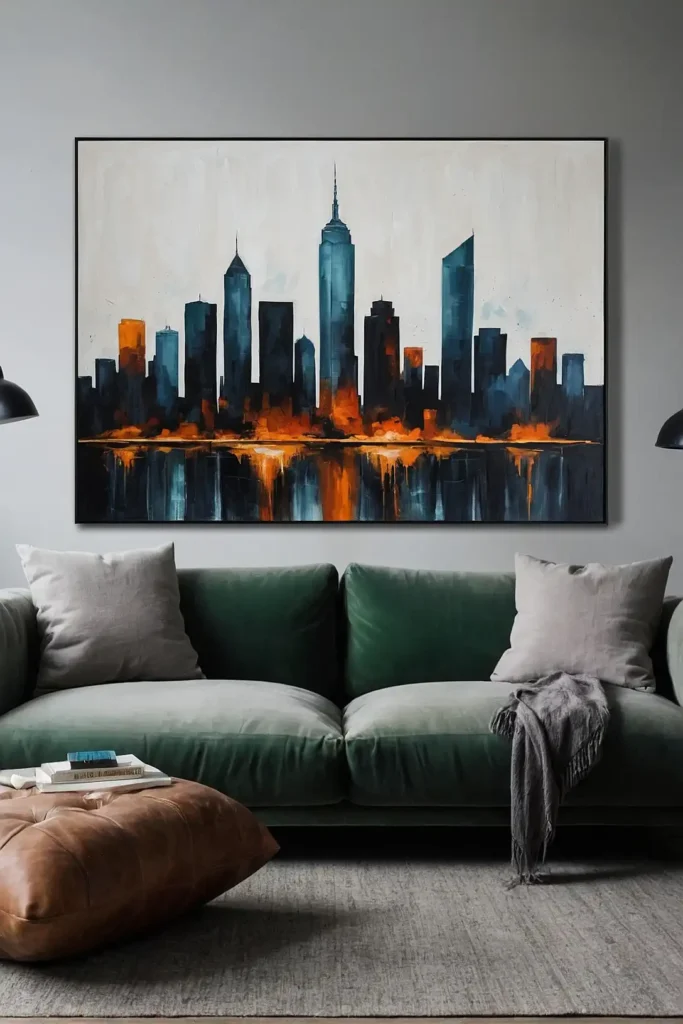
You can paint urban scenes using simple rectangular building shapes against sunset backgrounds.
Keep details minimal for modern, clean aesthetics.
Paint a gradient sky background from light to dark. Add building rectangles in black silhouette, varying heights for realistic city proportions.
Cityscape paintings teach perspective basics while creating contemporary art.
Your urban scenes capture city energy through simplified architectural forms.
15: Abstract Heart Art

You’ll explore emotional expression using heart shapes filled with different colors, patterns, or textures. Let creativity guide color choices.
Sketch heart outlines lightly, then fill each with unique color combinations. Try gradients, dots, stripes, or solid colors for variety.
Heart paintings teach emotional expression while practicing various techniques.
Your love-themed art celebrates feelings through personal color and pattern choices.
16: Simple Animal Silhouettes
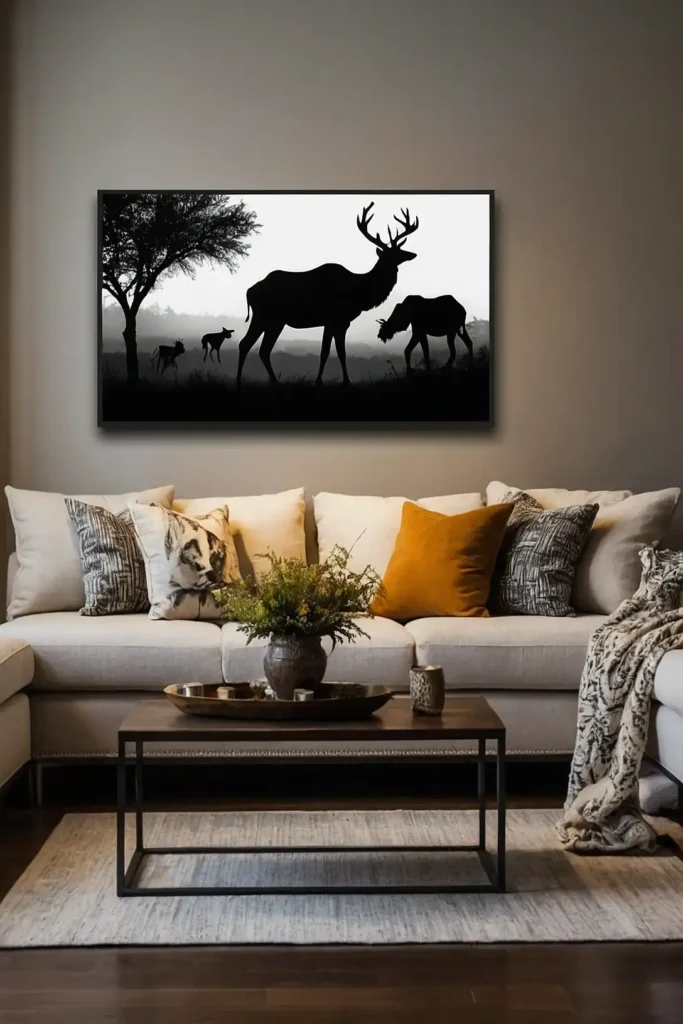
You can paint recognizable animal shapes using single colors against contrasting backgrounds.
Choose animals with distinctive silhouette shapes like cats or birds.
Paint a simple background color first. Add animal silhouettes in black or contrasting colors using basic shape combinations.
Animal paintings teach shape recognition while building confidence.
Your wildlife art captures creature essence through simplified, recognizable silhouette forms.
17: Textured Tree Bark Study

You’ll practice texture techniques by painting close-up tree bark using various brush strokes and color layering. Focus on surface patterns and colors.
Start with brown base colors, then add texture using vertical brush strokes. Layer different brown tones to create realistic bark appearance.
Bark studies teach texture creation while improving observation skills. Your nature details capture organic beauty through careful brushwork and color layering.
18: Simple Mandala Patterns

You can create meditative art using circular mandala designs with repeating patterns. Start from the center and work outward systematically.
Draw a light circle guide, then add patterns from center outward. Use dots, lines, and simple shapes in repeating, symmetrical arrangements.
Mandala painting teaches pattern design while encouraging mindful creation. Your circular art promotes relaxation through repetitive, meditative painting processes.
19: Cloudy Sky Practice

You’ll master cloud painting using white and gray colors blended softly against blue backgrounds. Focus on natural, puffy cloud shapes.
Paint a blue sky background first. Add white clouds using soft, circular brush motions, then blend edges for realistic softness.
Cloud painting teaches blending techniques while creating peaceful skies. Your atmospheric studies capture sky moods through gentle color transitions.
20: Simple Fruit Still Life

You can practice basic shapes and shading using simple fruits like apples or oranges. Focus on light, shadow, and basic color mixing.
Paint simple fruit shapes using base colors. Add highlights with lighter tones and shadows with darker colors for dimensional effects.
Still life painting teaches observation and shading basics. Your fruit studies develop fundamental skills while creating classic artistic subjects.
21: Inspirational Word Art
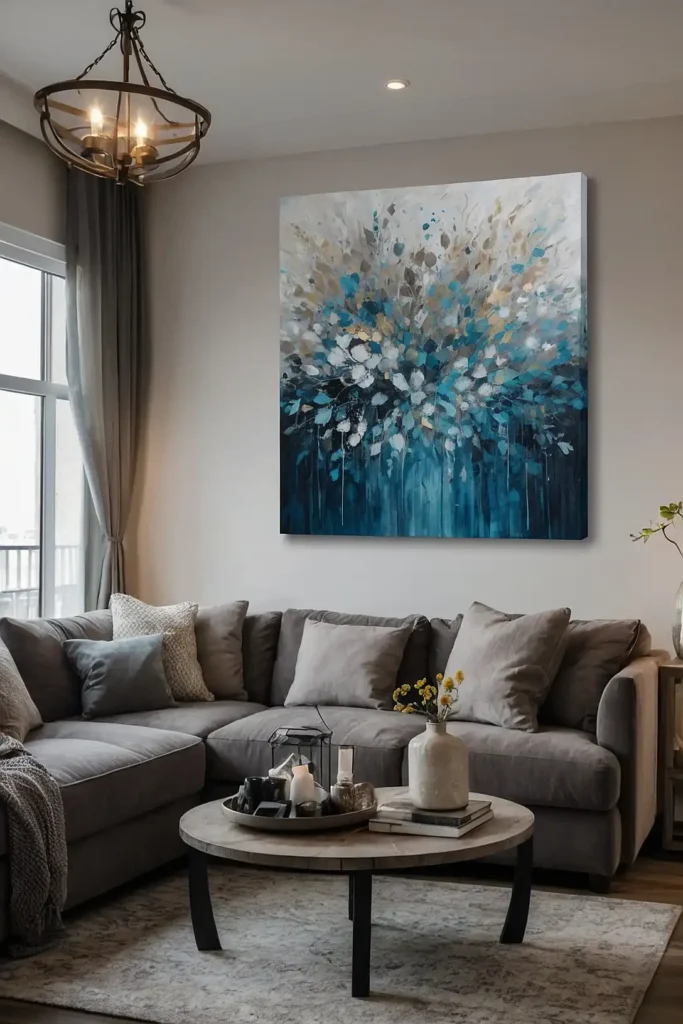
You’ll combine painting with lettering by creating motivational word art with decorative backgrounds. Choose words that inspire and uplift daily.
Paint a colorful or textured background first. Add inspiring words using contrasting colors, focusing on readable, simple lettering styles.
Word art teaches lettering skills while creating meaningful decoration. Your inspirational pieces motivate daily while practicing both painting and typography.
Conclusion
These beginner painting ideas build confidence while teaching essential techniques.
You’ll develop artistic skills through enjoyable, achievable projects that create beautiful personal artwork.

